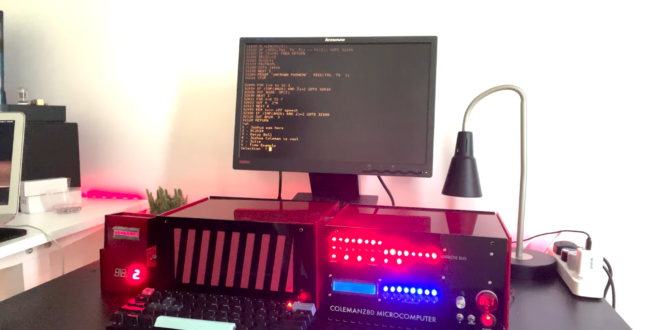The exterior is worth seeing: laser-cut bright red acrylic pieces form a sleek, semi-transparent case with air vents on the sides and plenty of flashing lights on the front. Inspired by 1970s classics such as the Altair 8800, the front panel gives the user a direct view of the device’s internal state and allows simple command input through a series of toggle switches. The CPU, RAM, and other core hardware are housed in one case, with all expansion modules in a second case, connected to the main board through a 40-wire flat cable.
Although the motherboard closely follows the design of the RC2014, [Joshua] He put a lot of effort into adjusting the system to his own needs. Expansion boards created by the NS16550 include a UART to replace the default 68B50, a battery-backed real-time clock, a YM2149-based sound card and even a speech synthesizer built around the classic SP0256 chip, from Speaking and spelling fame. An even more exotic feature is the presence of the AM9511, one of the oldest mathematical coprocessors ever made, to speed up floating point calculations. All of these units are built entirely by hand on prototype boards: we can hardly imagine how much time this must have taken.
Output devices include a VGA adapter from the Raspberry Pi Pico as well as a regular 4-digit, 7-segment LED display and a set of classic HP LEDs. [Joshua] He runs several demos in his video (embedded below), from calculating a Mandelbrot combo to playing chiptunes on the YM2149. There’s plenty of room for further expansion, too: [Joshua] It plans to build more peripherals including a floppy drive interface and a motorized car driver unit.
This is not the first Coleman Z80 computer: the previous version runs on Architectural Engineering [Joshua] Designed by himself. We’ve seen several other great RC2014 derivatives, such as the a Small mini version and this is Altair-inspired case.
Originally posted 2022-12-21 14:01:42.
